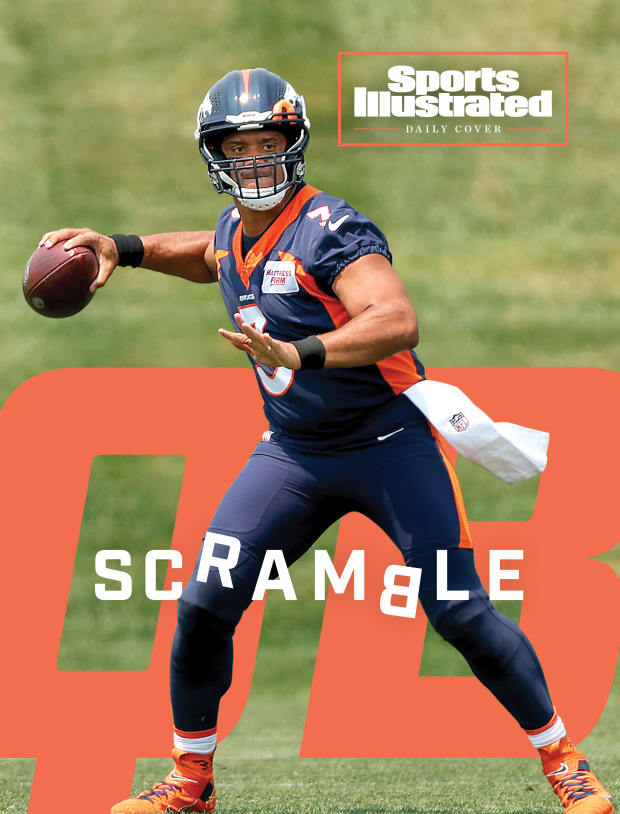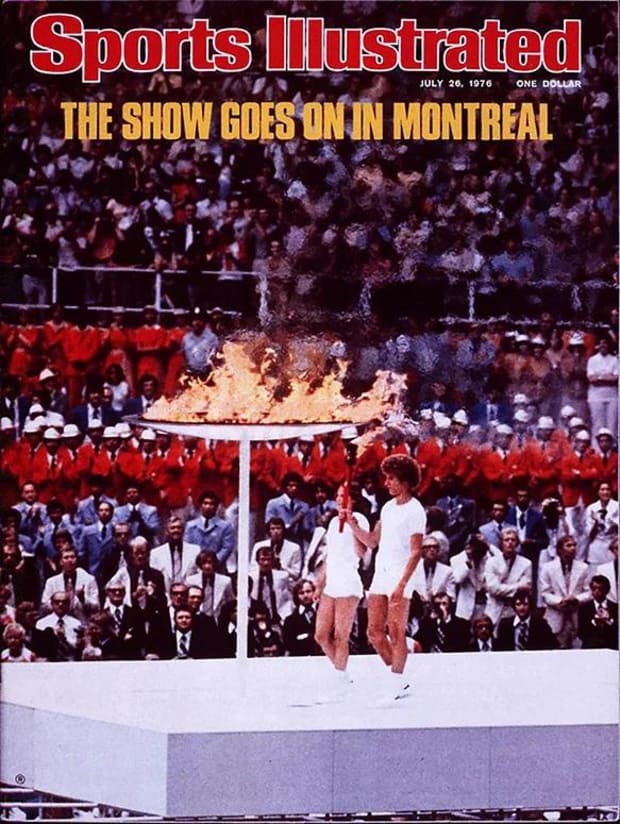Good morning, I’m Dan Gartland. I promise I’m doing my job to the best of my abilities, even without a homework contract.
In today’s SI:AM:
📝 Kyler Murray’s unique contract clause
⚾ Why the Nats have to trade Soto ASAP
If you're reading this on SI.com, you can sign up to get this free newsletter in your inbox each weekday at SI.com/newsletters.
Who wanted this information out there?
Kyler Murray’s new contract with the Cardinals came with some notable strings attached.
Arizona signed its franchise quarterback to a five-year deal last week that is worth $160 million guaranteed and up to $230.5 million. The deal marks the resolution of some mild drama between the team and Murray, who skipped most offseason workouts and removed all references to the Cardinals from his social media accounts as he angled for a new deal.
But it would appear that the two sides haven’t completely buried the hatchet, given what leaked about Murray’s contract yesterday. NFL Network’s Ian Rapoport reported that the deal includes an “independent study” addendum, under which Murray is required to spend four hours per week during the season reviewing “material provided to him by the Club” outside of his mandatory meetings. If Murray doesn’t do his homework, he would be deemed “in default” of his contract and could lose out on guaranteed money.
Rapoport tweeted an image of the addendum, which includes this clarification about what qualifies as independent study:
Player shall not receive any credit for Independent Study with respect to any time periods during which any material is displayed or played on an iPad or electronic device if (a) Player is not personally studying or watching the material while it is being displayed or played or (b) Player is engaged in any other activity that may distract his attention (for example, watching television, playing video games or browsing the internet) while such material is being displayed or played.
Sports Illustrated contributor Andrew Brandt, the former vice president of the Packers, tweeted that he had never seen a clause like Murray’s in 30 years reviewing NFL contracts.
While it may be unusual, the Cardinals’ reasons for including the addendum are clear, Albert Breer writes:
The last two offseasons, Murray’s been only a partial participant in the team’s offseason program. And because 2020’s offseason program was wiped out thanks to the pandemic, that means, through four years, Murray still hasn’t had a full offseason program. Add to that there have been questions about leadership and even punctuality at points in his career, and it’s fair to connect these clauses to the team wanting more of Murray off the field. (To be fair, Murray has been an excellent pro in how he takes care of his body.)
The Cardinals “wanted assurances that Murray was committed to becoming [a team leader] before paying him,” Breer adds.
To me, the strangest thing about the clause isn’t that it was included in the contract but rather that it became public. Neither side benefits from this information being released. It makes the Cardinals look like overbearing micromanagers who at the same time are so careless with their money that they’ll give $160 million to a guy who they don’t trust to do his job. And it makes Murray look like he's been neglecting his responsibilities during his first three pro seasons.
It’s natural for the Cardinals to attempt to cover their backs when making such a significant investment, but at what cost? Maybe the addendum is just a formality to protect the team in the event that Murray’s work ethic begins to lag. Or maybe it’s indicative of a striking level of distrust that one of the league’s premier quarterbacks will work to take his game to the next level. If the latter is true, how successful can the partnership between Murray and the Cardinals be?
The best of Sports Illustrated

It’s football season again. Today’s Daily Cover features Conor Orr ranking the offseason’s best quarterback moves:
This could be the most important year for the QB position since 2017, when Patrick Mahomes and Deshaun Watson were drafted, and '18, when Josh Allen and Lamar Jackson entered the NFL. Three tenured Pro Bowl players on at least their second NFL contract—Matt Ryan, Watson and Russell Wilson—will be starting the year in different uniforms. Two stalwarts long believed to have eyes for the open market—Tom Brady and Aaron Rodgers—will be returning to their former clubs.
Tom Verducci lays out five reasons why the Nationals have to trade Juan Soto before the deadline. … In his final story from the World Athletics Championships in Eugene, Greg Bishop wonders where the United States’ strong showing will be enough to vault track into the mainstream by the 2028 Olympics in Los Angeles. … Our NBA experts predicted where the league’s biggest trade targets could end up before the season starts.
Around the sports world
The city of Chicago has released the first renderings of the proposed dome over Soldier Field. … LIV Golf’s future plans include relegation and a qualifying tournament. … Paul “Triple H” Levesque will oversee WWE’s creative department following Vince McMahon’s departure. … The Bucks’ G-League affiliate has signed the youngest Antetokounmpo brother, Alex. … Shareef O’Neal, Shaq’s son, has also signed with the G-League. … The Pistons are bringing back their early-2000s teal uniforms as an alternate next season.
The top five...
… things I saw yesterday:
5. Josh Allen’s reaction to being left hanging by Peter King.
4. Adam Schefter’s quickly deleted tweet apparently workshopping the wording of his tweet about Danny Amendola’s retirement (presumably with his source).
3. Zack Grienke’s 67-mph curveball.
2. This utterly chaotic play during the A’s-Astros game.
1. Neymar’s egregious dive during a friendly in Japan.
SIQ
Joe DiMaggio, owner of the longest hitting streak in MLB history, had an even longer streak as a minor leaguer, which was snapped 89 years ago this week. How many games did that streak reach?
- 59
- 61
- 63
- 65
Yesterday’s SIQ: Well, I messed up on this one. Here’s the question I asked: Who is the only person to play Division III college baseball and later be inducted into the Hall of Fame?
The answer I was going for was Billy Wagner, but I got a little ahead of myself. He hasn’t been inducted into the Hall of Fame. He has seen growing support among Hall voters, though, earning 51% of the vote this year after only appearing on 31.7% of ballots in 2020. He has three more years of eligibility.
Anyway, I already wrote a whole thing about Wagner’s career that I’ll still include here because he was awesome.
While there have been a few Hall of Famers who played at small colleges that are now Division III—such Don Sutton (Whittier College)—Wagner would be the only one to play college ball at that level after the NCAA instituted the three-division system in 1973.
Wagner, who grew up in a small town in southwestern Virginia, received little attention from colleges and decided ultimately to attend Ferrum College, a school that today has less than 1,000 undergraduates. At Ferrum, Wagner played football in addition to baseball, but after his freshman year, his football coach convinced him to focus on baseball.
As a high school senior, the undersized Wagner’s fastball was only topping out at about 84 mph. Two years later, he was practically unhittable, as Michael Bamberger wrote in a 1999 SI profile:
During his sophomore year, in the spring of 1992, Billy set an NCAA record by striking out an average of 19.1 batters per nine innings. He was throwing in the mid-90s. By his junior year baseball insiders knew all about him. Agents poured into Ferrum and took Billy out for dinner. That was against NCAA rules, but Billy knew he wasn't coming back to school for his senior year, and a free meal was a free meal. In June the Astros drafted him in the first round.
Even though he was picked 12th in the 1993 draft, Wagner still defied the odds in becoming one of his generation’s most feared relievers. He was an undersized power pitcher (listed at 5' 10", 180 pounds) who learned to throw with his non-dominant arm after breaking his shoulder as a kid and went from rural Virginia to a 16-year career in the majors. I think that’s more than worthy of a spot in the Hall of Fame.
From the Vault: July 26, 1976

Walter Iooss Jr./Sports Illustrated
The IOC likes to present the Olympics as a festival of international goodwill—countries from around the world putting aside their differences for a few weeks to engage in spirited but friendly competition. It’s a myth that was laid bare in 1976.
The 1976 Olympics in Montreal were plagued by a variety of issues long before the opening ceremony. Construction delays on the main stadium and a massive budget overrun (the final cost was more than double the expected cost) cast a pall over the Games in the months leading up to them.
Then, more than 20 African nations also bowed out at the last minute. When Pat Putnam’s cover story went to press, 24 nations had decided to boycott the Games.
Many of the countries had demanded that New Zealand be excluded from the Olympics after the nation’s men’s rugby team, the All Blacks, toured apartheid-era South Africa earlier that year. When the IOC refused to boot New Zealand, African countries boycotted, along with a few others.
Taiwan, which had competed at the 1976 Winter Olympics as the Republic of China, also boycotted. The government of mainland China (the “People’s Republic of China”) objected to Taiwan’s use of the name “Republic of China” and urged Canada not to allow the country to use it in Montreal. Unable to use its preferred name, the Taiwanese delegation pulled out of the Olympics.
It was a sign of things to come. Putnam wrote that the boycotts had “created speculation over host Russia’s intentions for the 1980 Olympics,” which the United States chose to boycott.
Check out more of SI’s archives and historic images at vault.si.com.







